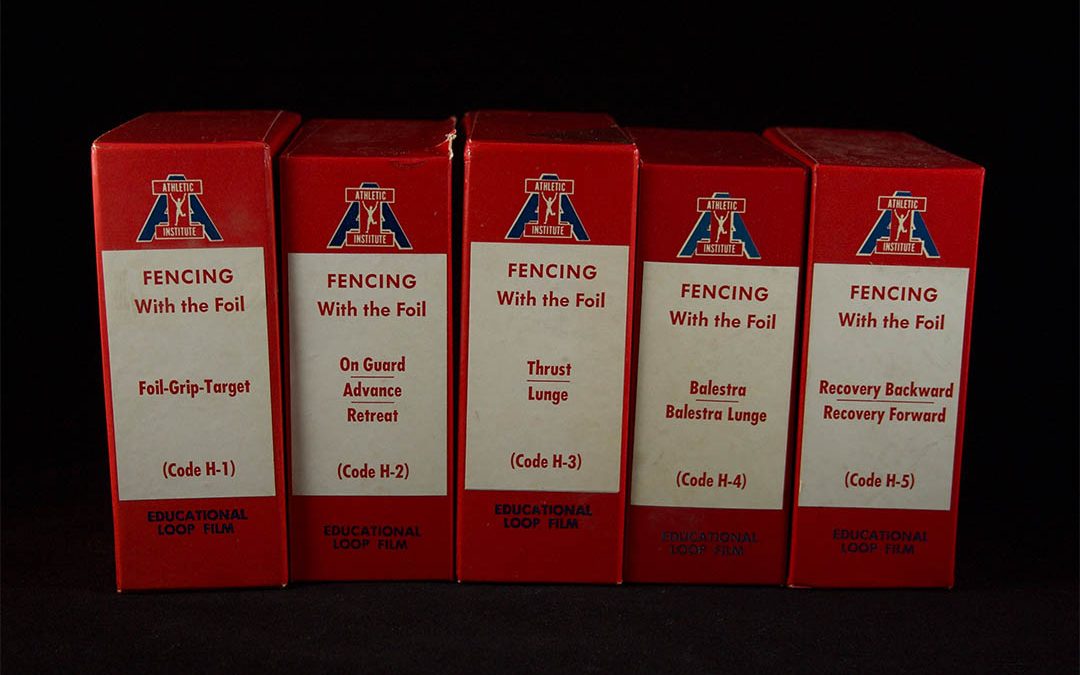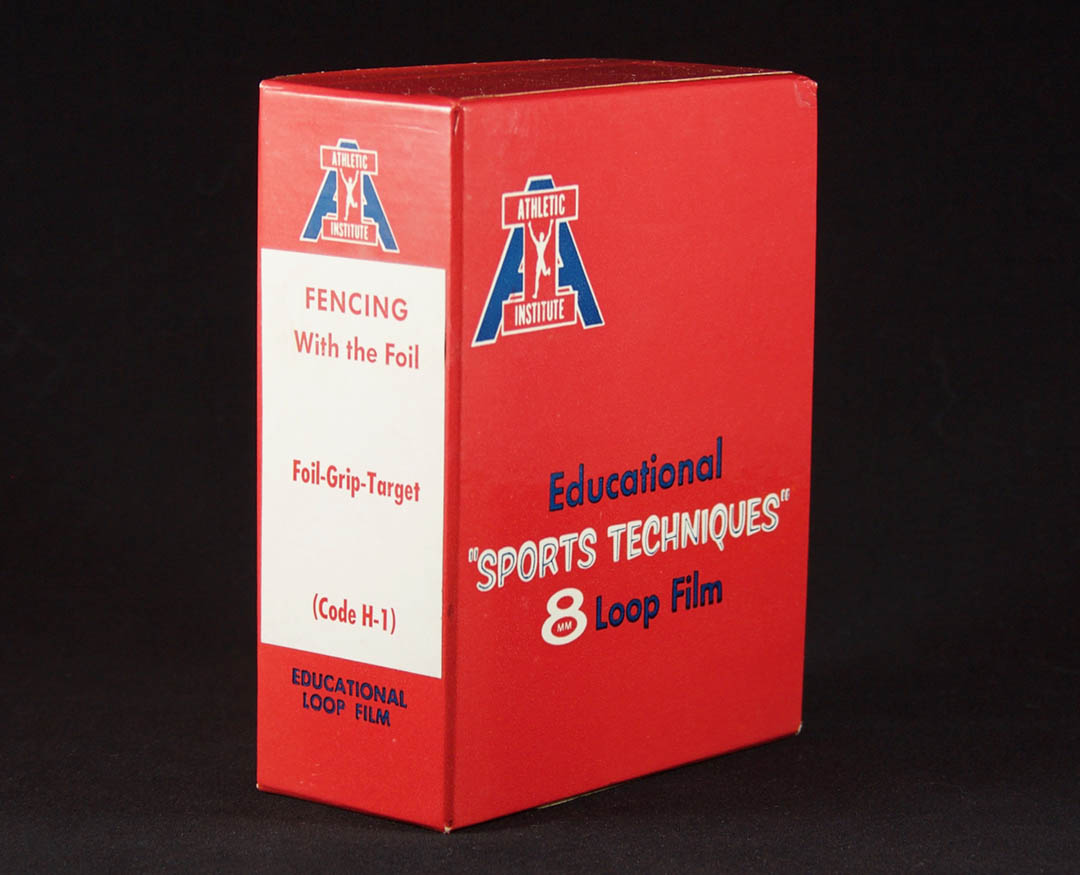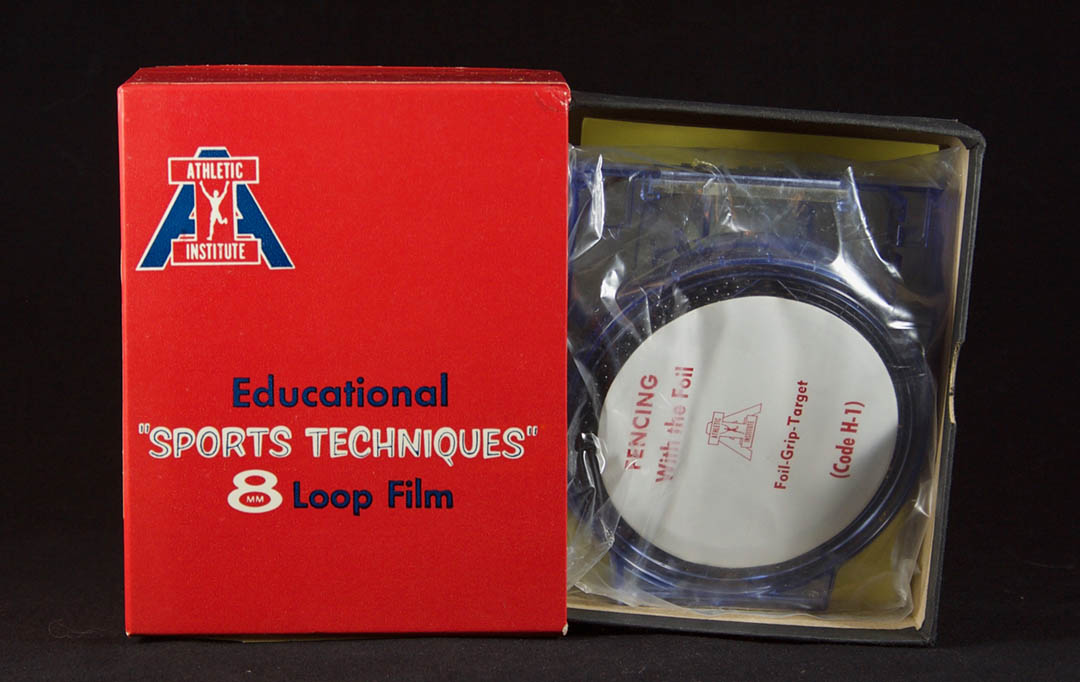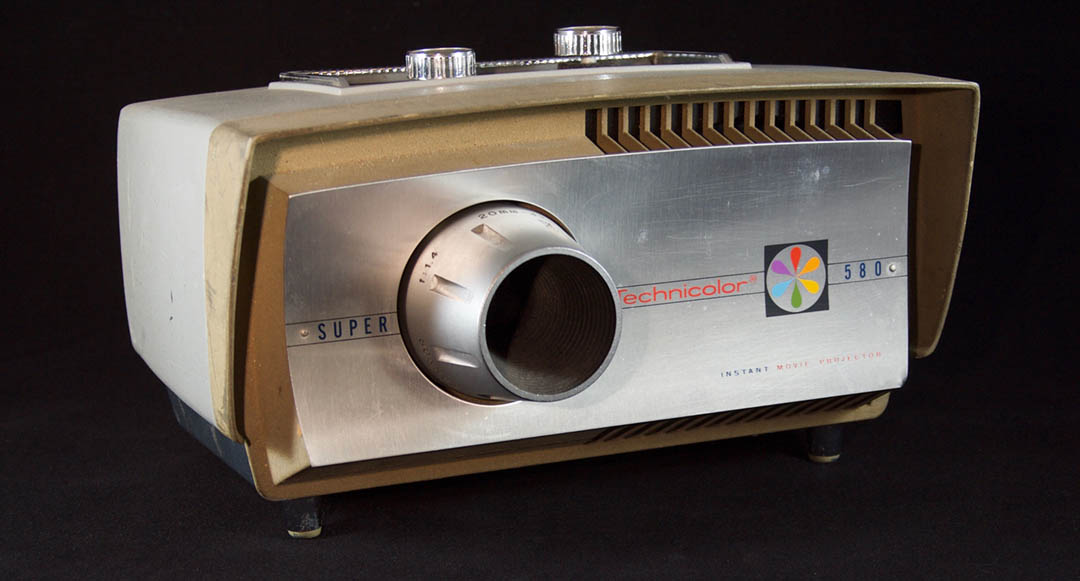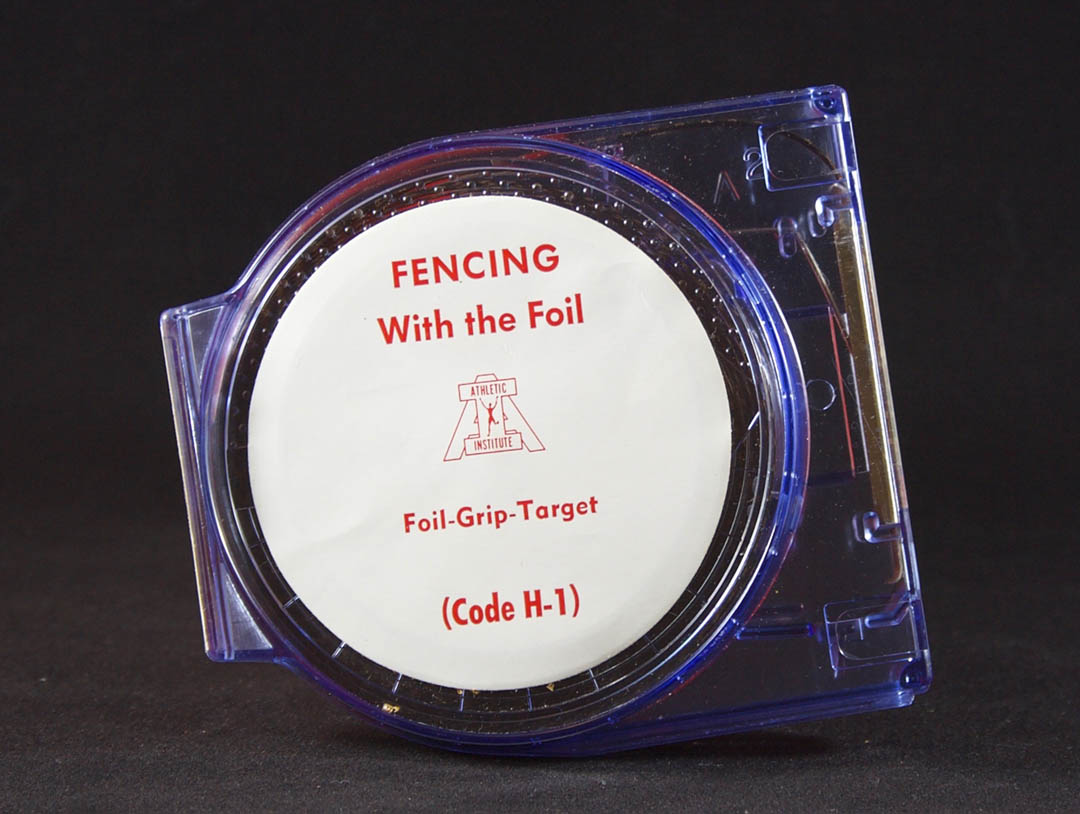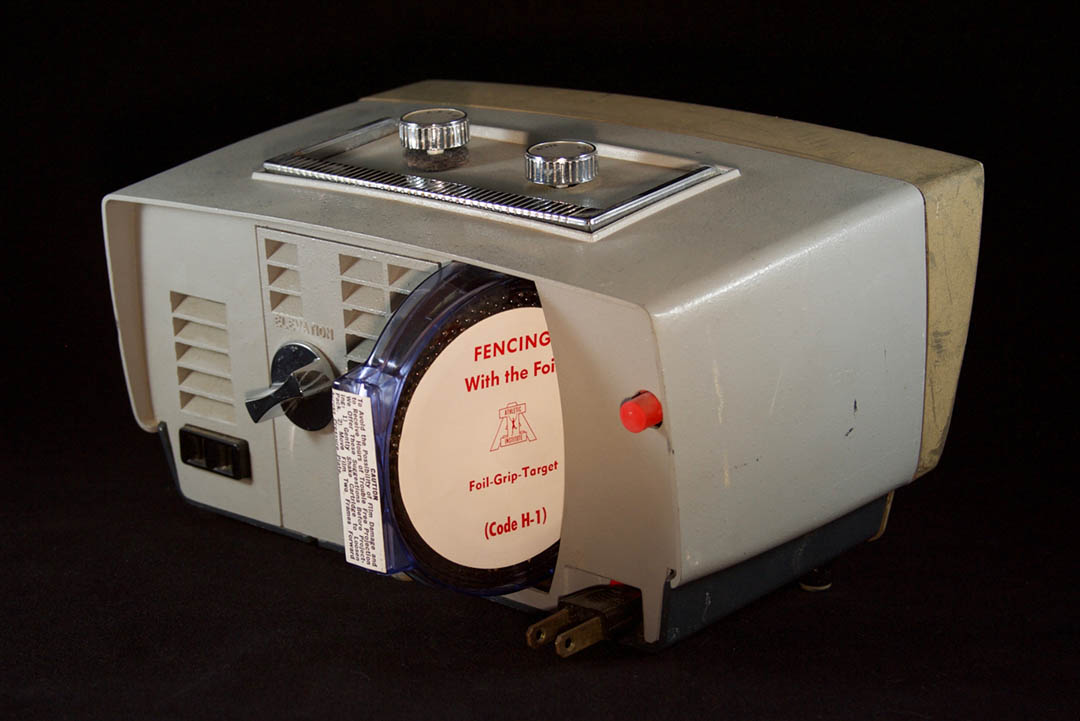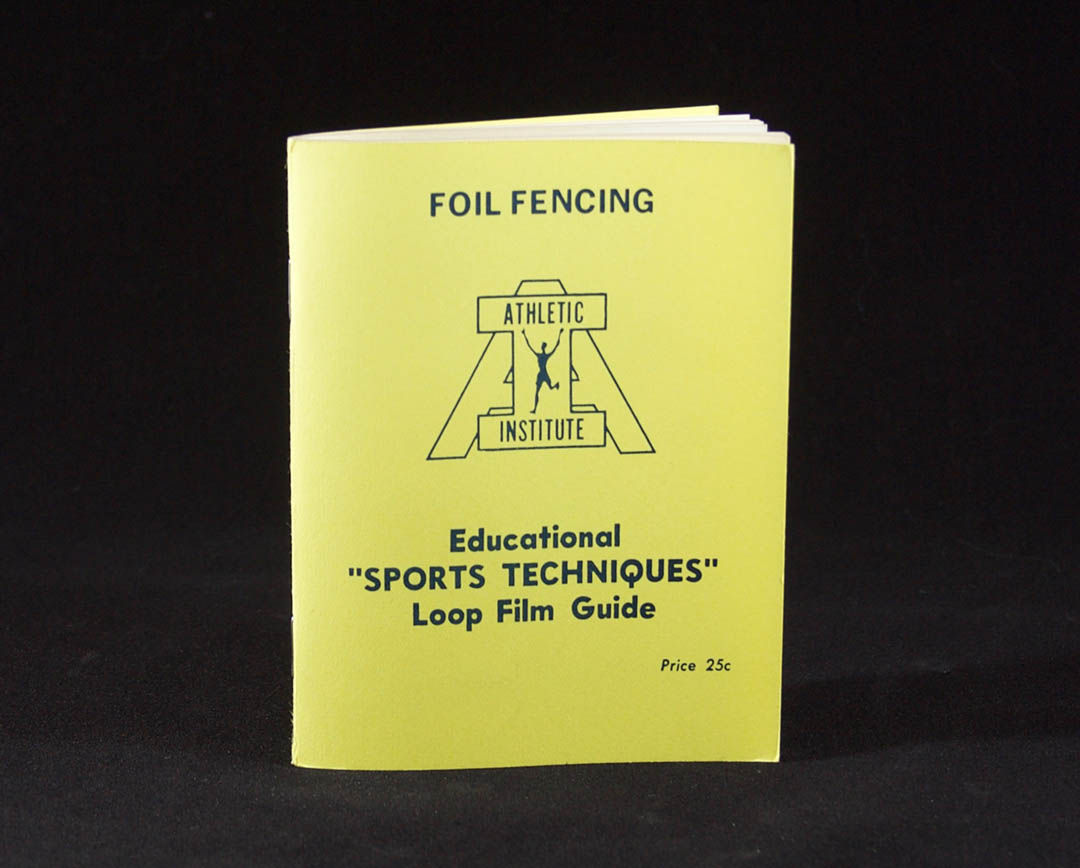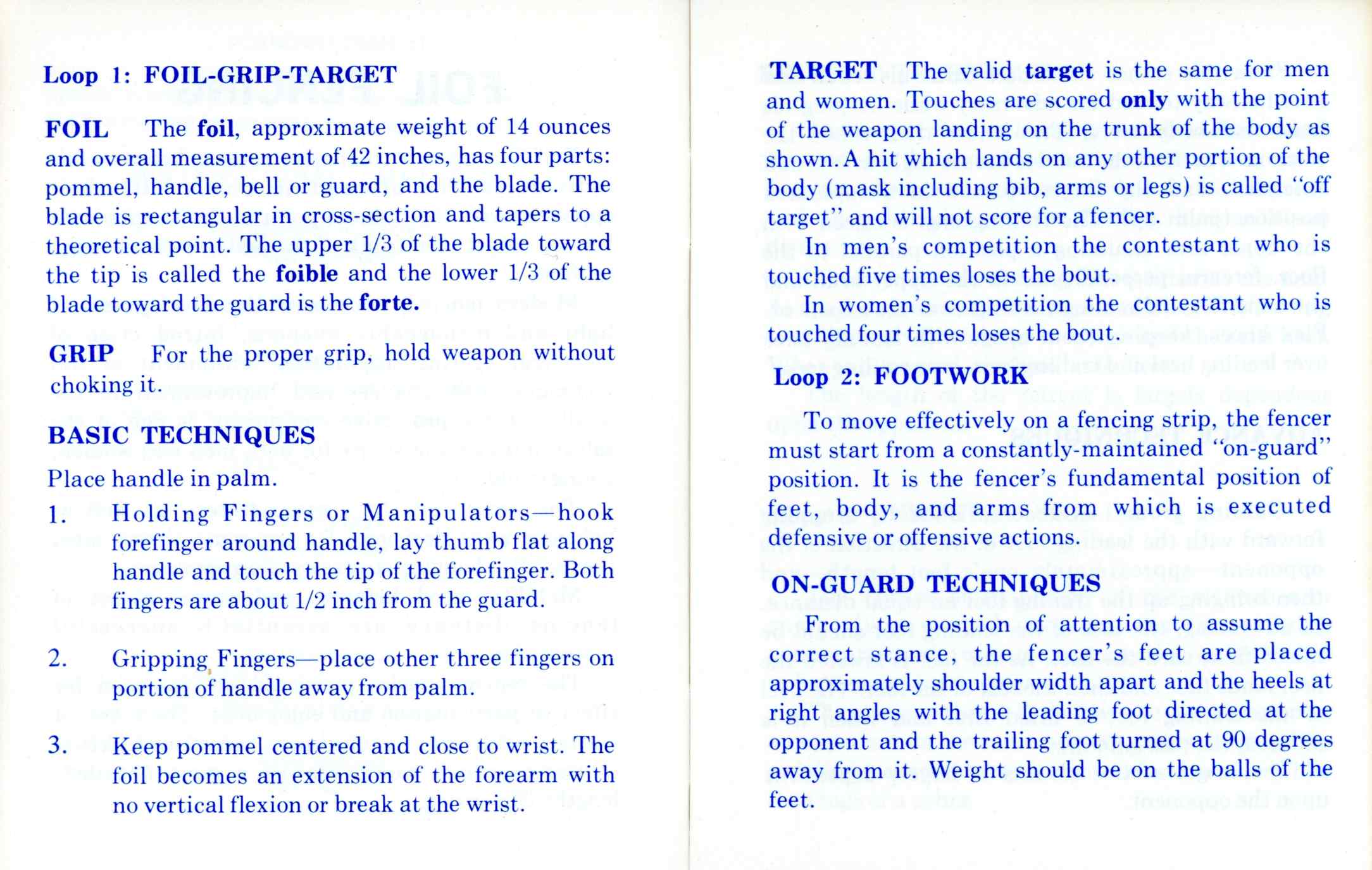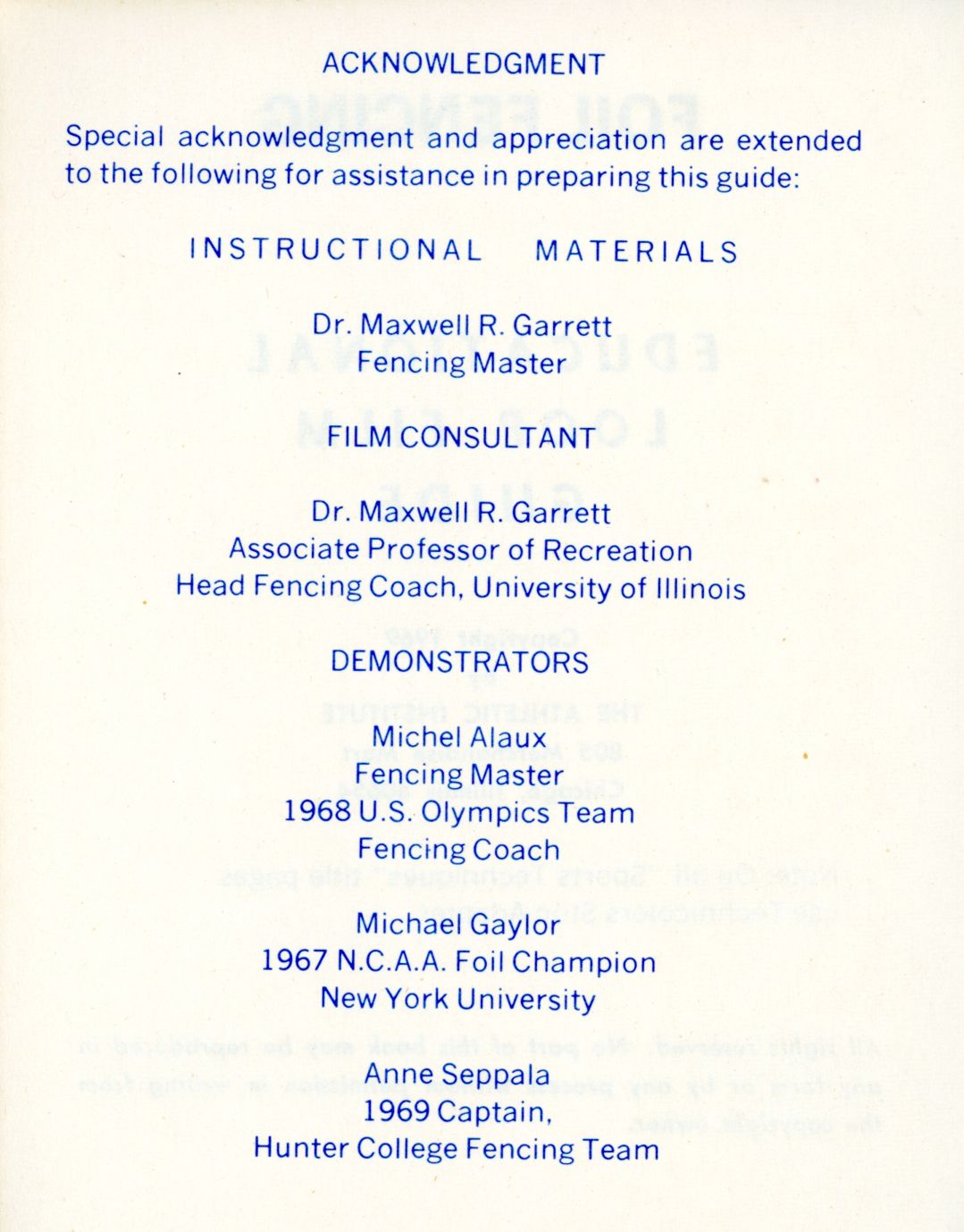It keeps happening. Coincidence where it’s entirely unexpected. My good friend Terrence Gargiulo says it’s because I’m in the right place, doing the right things. He’s smarter than me and more spiritual, so I’ll take his words at face value. I can always use the encouragement. Today’s surprising happenstance all went down since I wrote last week’s story. If you haven’t checked that one out, here’s the outline in brief. I wrote about a booklet created by the Athletic Institute out of Chicago that was meant to be used hand-in-hand with a filmstrip and a record album. It was the first time I’d heard of the Athletic Institute, although they published a great deal of sports related how-to books and – clearly – produced a variety of visual aides to assist with training and technique.
Lo and behold, in addition to filmstrips they also produced film. In this case, film encased in plastic cartridges that were meant to be played in a very specifically designed projector unit. It’s the exact same technology that Charlie Selberg used for his series, “Modern Foil Techniques” that have been featured a number of times on this site. This is a completely unique series, produced by the Athletic Institute with the assistance of Maxwell Garret, who’s the same fencing mind behind the booklet and filmstrip teaching aide I was discussing last week. And, it’s one that I would never have known about if not for the assistance of my new-ish bestie, Ebay. Have you met Ebay? Ebay is amazing. Two words: search parameters.
The funny thing is, I wouldn’t have found this set of five unused boxes if I hadn’t been looking for filmstrips and recordings to go along with the booklet I wrote about last week. And I didn’t get the entire contingent of boxed film loops, just the first five. But they’re in absolutely perfect shape. They seem not only to have been unused, but stashed somewhere away from light or other potential aging agents and left alone. Since 1969. That’s when they were produced. Is that an indication of their usefulness? Or were they simply purchased and ignored and forgotten? No idea. But along comes Ebay and suddenly anything can have value to someone and this time it was me, thanks to the Buy It Now feature. Full price? Yes, please.
To me, this type of thing is totally and completely cool. I love this kind of find. It’s my particular brand of geekdom. And it’s not like it’s something I have flashbacks about. I was never, to the best of my recollection, exposed to this particular type of classroom experience. Maybe that’s why I like it so much. Filmstrips? 16mm movies and projectors? Yes and yes. These crazy things? Nope. I’d never seen one of these cartridges before Matthew Porter of American Fencers Supply gifted me the complete set of Selberg films, and the player was something found on, and purchased from, Ebay based on a search that I constructed from looking at the cartridges themselves. So this isn’t playing to some deeply ingrained memory of a long-ago classroom experience. My best guess is that they never completely caught on. Between filmstrips, which had a much lower entry cost than it’s primary classroom rival, the 16mm projector, I think these things got lost in the middle.
They had the same filming requirements as making a movie, with the addition of requiring encasing the film in these plastic containers – and also needing a unique projector to make them go. This set was produced in 1969, just a couple of years after the introduction of the entire system of cartridge and projector, and in less than 10 years, videotape would begin to replace film as the go-to media for classroom use.
The lack of sound for this system is undoubtably one of the factors that led to its early demise. Even the filmstrip people had figured out syncing picture to a record. Adding a sound component to this player, the way it’s designed to work, would have been nigh impossible. Soundtracks on 8mm film is not something that was ever on offer, I don’t think. Even adding a soundtrack to Super 8 was tricky in the best case and expensive, since it wasn’t nearly the market size as either 16mm or 35mm, so this system was always going to have that working against it. Charlie Selberg tried, with his production, to overcome that with a script that accompanied his film loops. For each lesson, there was something for the instructor to read before playing the loop, more to be spoken over the noise of the projector during the screening, and additional dialogue after.
This set, instead, came with a tiny little booklet that was the roughly the same size as the cartridges and fit neatly inside the box. Each of the five boxes I purchased has a copy of the booklet – they’re all the same – and it goes through each of the loops, describing what the learning expectation was for each “class”. There were 19 lessons in all, meaning I’ve got 14 more to track down if I want to collect the whole set.
Since it’s the only thing I have to compare, I’ll once again contrast this to Selberg’s series. Here, the descriptions are brief by necessity since the booklet is pretty tiny. They don’t do much more than cover the general descriptions of the actions you see in the film loop and there isn’t a follow-up of ‘things to do with this knowledge’ for the teacher and students to practice. In general, it’s a little hard to imagine who the audience was. If it was for an inexperienced teacher, the filmstrip and record player, with the much more in-depth book, provided a whole lot more help. For an experienced teacher, I can’t think that this would actually be of much value. In the time it would take to set up everything, sit the students down, give them a brief intro on what was happening and then watch the short clip, you could just as easily have stayed in the gym and taught this lesson and more.
I did a rough-and-tumble recording of the first of the film loops last night, just to see what there was to see. There’s only a brief glimpse of the fencing master giving the lessons, but I thought he looked familiar. It definitely wasn’t Maxwell Garret, so I went back and looked at the booklet. Sure enough, the Maestro in this film series is none other than 1968 US Olympic Coach Michel Alaux. An added benefit! The video recording came out watchable, if not as high quality as the transfers I had done of the Selberg series. I’m not sure the person who did those for me is still working, so I may need to stick with these rough transfers. He was able to disassemble each cartridge, transfer the film and reassemble the cartridges and they play as well as ever. I don’t want to trust myself to attempt the cartridge surgery, but since I have a working version of the projector, I instead set it up to play against a white screen (ok, it was actually a pillowcase taped to the wall) with a digital camera right above the projector. The aspect ratios are a bit different and the projector clearly needs a good cleaning, but it all works. So without further ado, here’s Loop #1 of the Athletic Institute’s presentation on Foil Fencing, conceived by Maxwell Garret and starring Michel Alaux.
I even left in the projector sound because of course I did. One other comparison between last week’s entry and this one. In the filmstrip version that Max Garret put together, I made mention of the outlines of the target having been drawn over the top of the photograph. After seeing this, I’m no longer sure about that. The woman modeling the target area – and at this point in time, 1969, it’s now the same as the men – clearly has the target area outlined on her jacket with tape. (The caption actually says “red tape”, but this type of film’s most obvious sign of decay is the discoloration of the film into the red, so the actual red that was filmed has gone to black and everything else is red. Go figure. Common problem with film of this era.) So maybe they did actually have it taped on the jackets in the earlier incarnation of this particular aspect of the demonstration. That being the case, and since this isn’t a still image – the model does a 360 spin to show off the target – why did they put stripes across her shoulder and down her sides? I can see if you’re doing only front and back, but with the spin it almost seems like the two halves of the target are separate and not just one surface. I know. I’m nit-picking. I’ll stop now. Still, I can’t wait to see what coincidences are waiting in the weeds for me next! If this keeps up, I’ll have to get to Vegas or put a bet down on the ponies once the world opens up again. Here’s hoping it’s not too far off.

